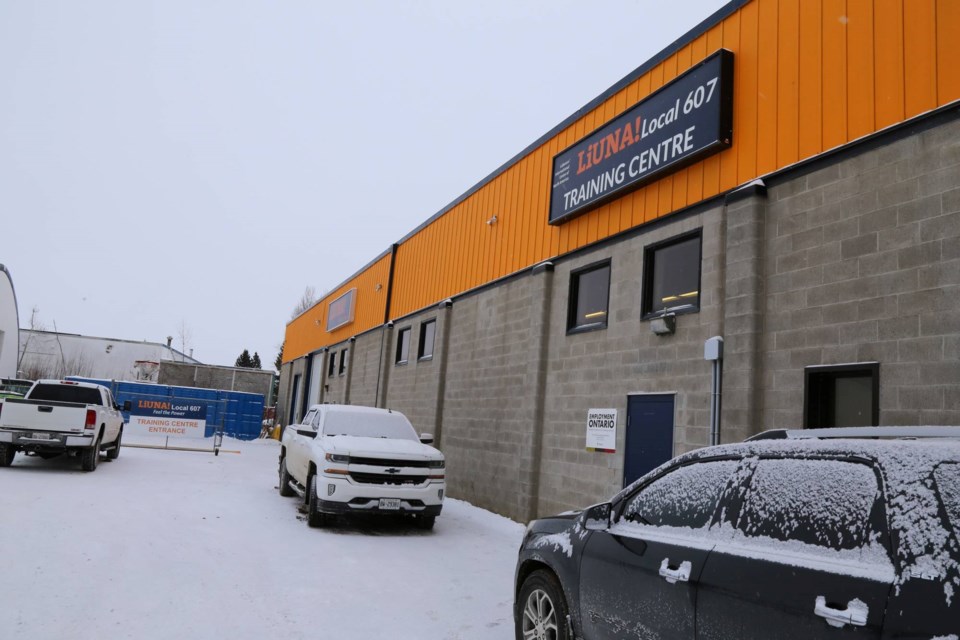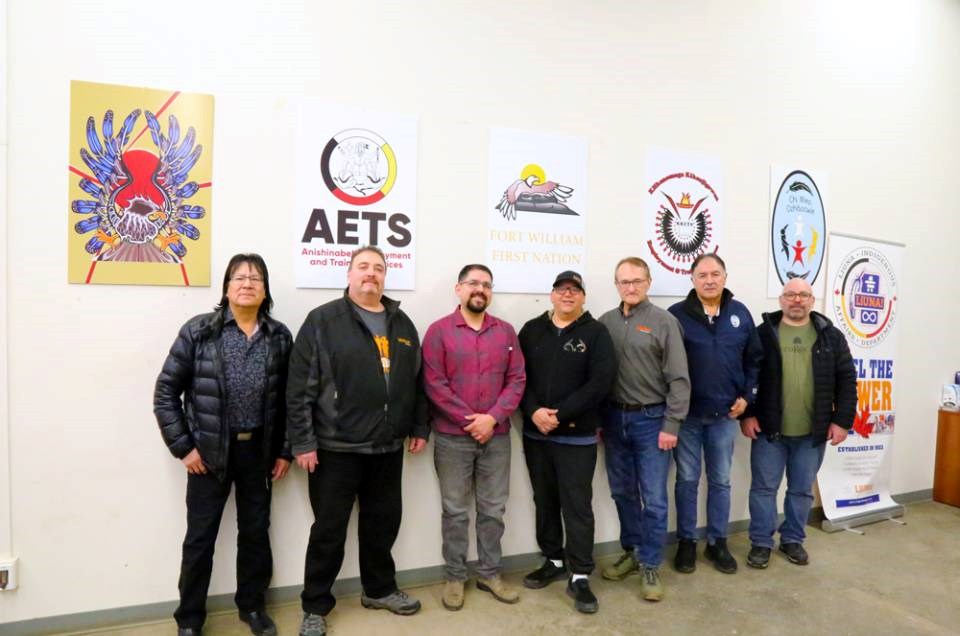Getting training programs for skilled trades up and running in Northern Ontario runs into a catch-22: you can’t run a training program without trades, and you can’t have trades without a training program. The issue is more pronounced in First Nations and especially remote communities across Northern Ontario.
Thunder Bay-based LiUNA (Labourers’ International Union of North America) Local 607 is helping change that — and the union recently won an Indigenous Skills, Employment and Training (ISET) Partner Award in recognition of its efforts.
“It’s a significant partnership award,” said Andy Nieweglowski, training director for LiUNA Local 607 Training Centre.
Nieweglowski said that over the past decade, LiUNA Local 607 trained more than 700 Indigenous workers through partnerships including the Sioux Lookout Area Aboriginal Management Board (SLAAMB), Kiikenomaga Kikenjigewen Employment and Training Services, Matawa Training Centre, and Fort William First Nation.
Ziggy Beardy, project manager with SLAAMB, said that LiUNA has been invaluable in providing training to his organization. SLAAMB was founded in 1991 to address employment and training needs in the Sioux Lookout and 25 First Nations in the area including 20 fly-in First Nations.
“Without LiUNA, we would have been lost,” Beardy said. He cited working with Red Seal carpenters, using LiUNA’s mobile classroom, and certification training as key to building capacity within communities. LiUNA helps SLAAMB train community members, creating a local workforce to work on projects rather than bring workers in.
“Every single one of those kids (in Hudson near Lac Seul First Nation) has their ticket now,” Beardy said.
Three of those students are on the verge of receiving their Red Seal carpentry certification, he said.
“Today, there are six structures that these young people have built.”
Chi Mino Ozhitoowin CEO and past Fort William First Nation Chief Peter Collins said that previously, training was informal or even self-taught.
“In a lot of our communities, people work in different fields but their skills never get recognized through a process,” Collins said.
That’s because there weren’t any certified trades people to sign off on hours. Now, those hours are starting to be recognized — and the local workforce means construction costs can come down.
“That means something to the communities,” Collins said.

Jordan Rouselle of Anishinabek Employment and Training Services (AETS) said that LiUNA provides training that is more in line with learning styles of its members.
“The first thing you think when you come in (to the LiUNA Training Centre in Thunder Bay) is, ‘Wow, it’s very inclusive of our Indigenous culture,’” Rouselle said.
He added that creating a safe, inclusive space is especially important for learners coming from First Nations because arriving in the relatively big city of Thunder Bay can be a culture shock. Academics can provide challenges as well.
“A lot of the community members we work with are non-technical. Eighty to 90 per cent of our community members struggled with that education part,” Rouselle said.
That academic portion of many college programs can seem overwhelming, and students often drop out or don’t even try, he said.
“These (LiUNA) training programs are shorter. In their eyes, it feels way more doable,” Rouselle said.
Further, wraparound supports such as help with child care and mental health are vitally important to learners. Too often, people get called back home to help with the family or they leave because being away takes a toll on their mental health. A holistic approach provides a better chance at success. LiUNA services like the mobile classroom also help alleviate those stresses on families by bringing the classrooms to the communities instead.
All these efforts help break that catch-22 and get the momentum moving in the right direction. Shane Fugere, business development manager at Chi Mino Ozhitoowin, said that exposing youth to the possibilities helps get them on the paths to trades.
“People start off as apprentices, and they become journeymen, and they pass along the torch to the next person,” Fugere said.

Beardy related a similar story. “One of the main objectives of the employment training initiative is to close the gap between Native and non-Native people,” Beardy said. “A couple of years ago, apprenticeships didn’t work up North because we didn’t have journeymen to write off the hours and the work experience. Now we have a whole batch of young people who are ready to write their Red Seal exam.
“Maybe in a year or two we’ll see 10 Red Seals.”
The next step to keep up the momentum is for these new tradespeople to become instructors, Nieweglowski said.
Ultimately, the goal is to build capacity and bring prosperity to more Indigenous communities in Northern Ontario. And, with the coming resources rush including in the mining industry and a shortage in skilled trades in general, there will be more work opportunities than ever.




